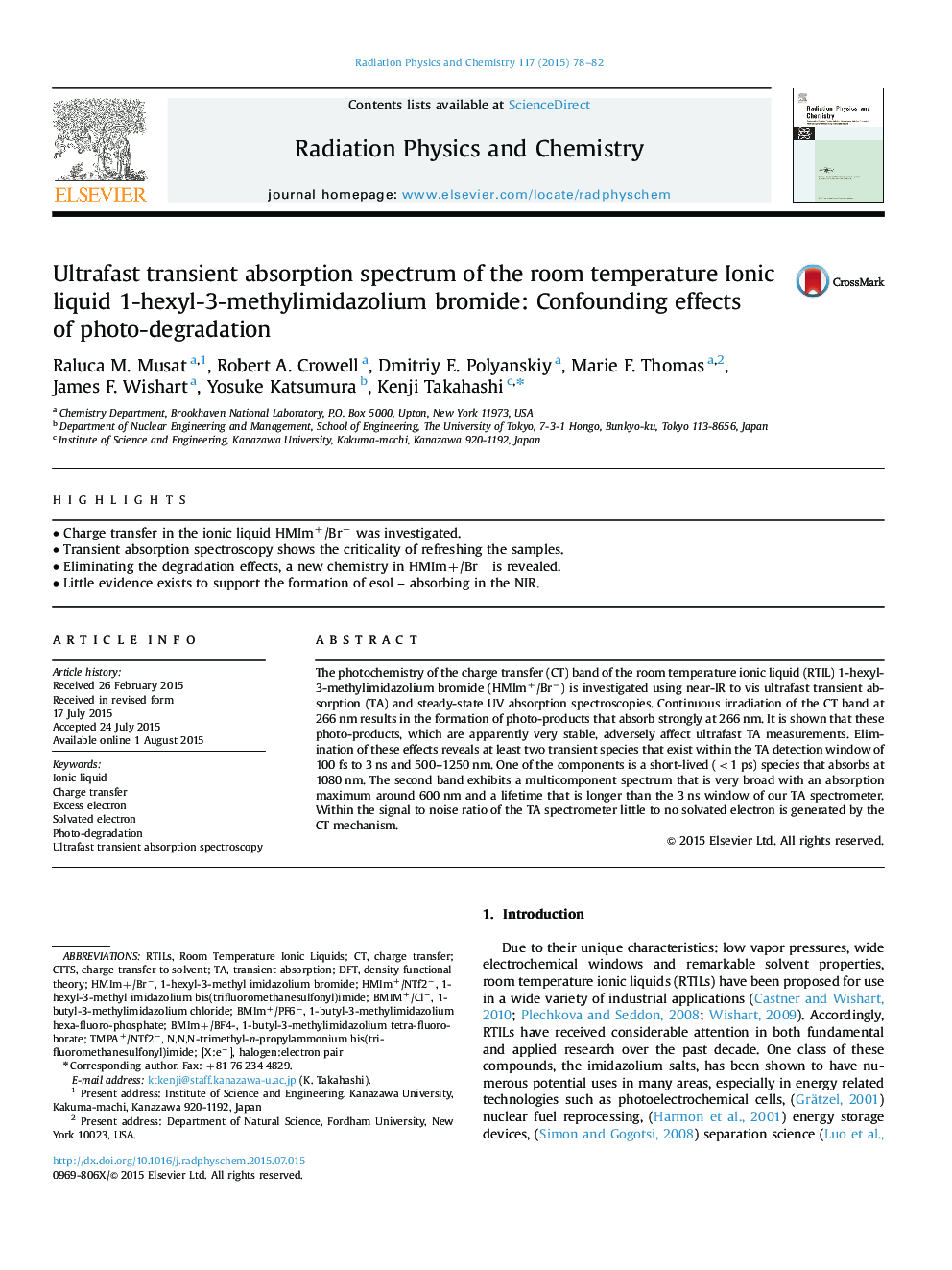| Article ID | Journal | Published Year | Pages | File Type |
|---|---|---|---|---|
| 1882316 | Radiation Physics and Chemistry | 2015 | 5 Pages |
Abstract
The photochemistry of the charge transfer (CT) band of the room temperature ionic liquid (RTIL) 1-hexyl-3-methylimidazolium bromide (HMIm+/Brâ) is investigated using near-IR to vis ultrafast transient absorption (TA) and steady-state UV absorption spectroscopies. Continuous irradiation of the CT band at 266Â nm results in the formation of photo-products that absorb strongly at 266Â nm. It is shown that these photo-products, which are apparently very stable, adversely affect ultrafast TA measurements. Elimination of these effects reveals at least two transient species that exist within the TA detection window of 100Â fs to 3Â ns and 500-1250Â nm. One of the components is a short-lived (<1Â ps) species that absorbs at 1080Â nm. The second band exhibits a multicomponent spectrum that is very broad with an absorption maximum around 600Â nm and a lifetime that is longer than the 3Â ns window of our TA spectrometer. Within the signal to noise ratio of the TA spectrometer little to no solvated electron is generated by the CT mechanism.
Keywords
Related Topics
Physical Sciences and Engineering
Physics and Astronomy
Radiation
Authors
Raluca M. Musat, Robert A. Crowell, Dmitriy E. Polyanskiy, Marie F. Thomas, James F. Wishart, Yosuke Katsumura, Kenji Takahashi,
